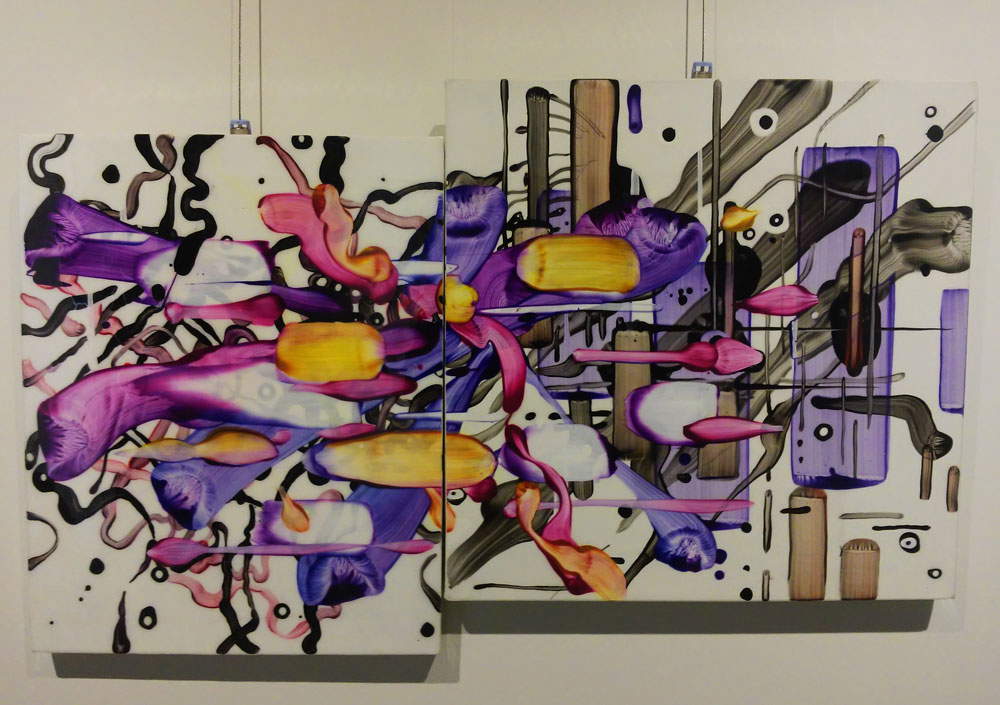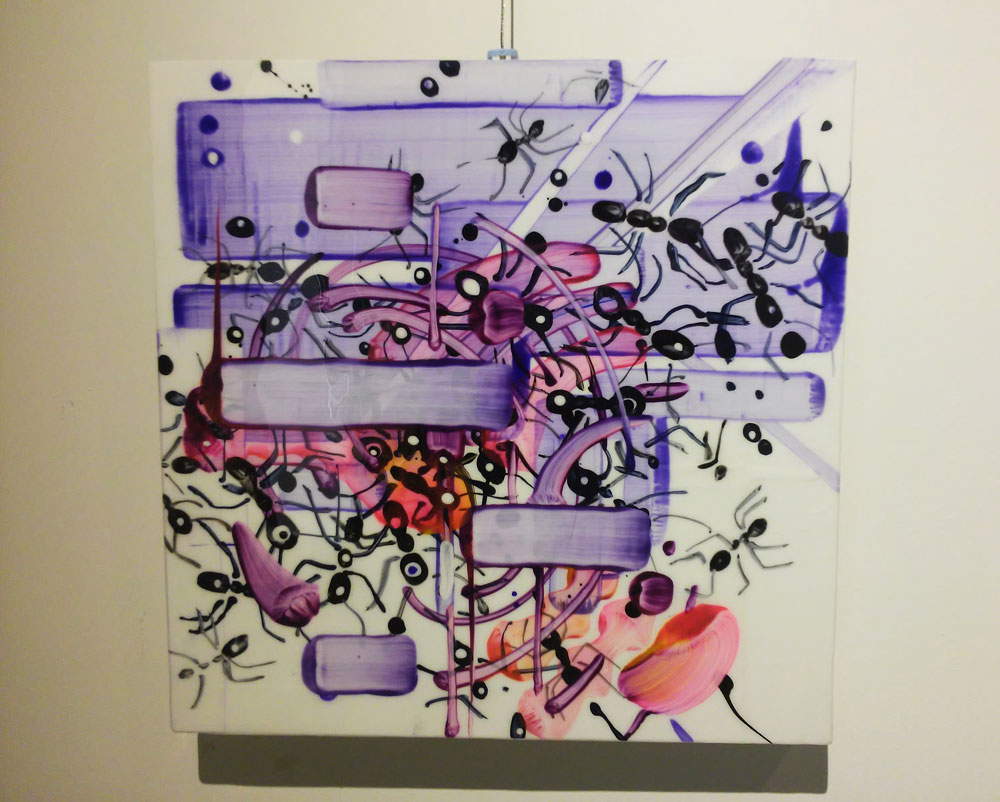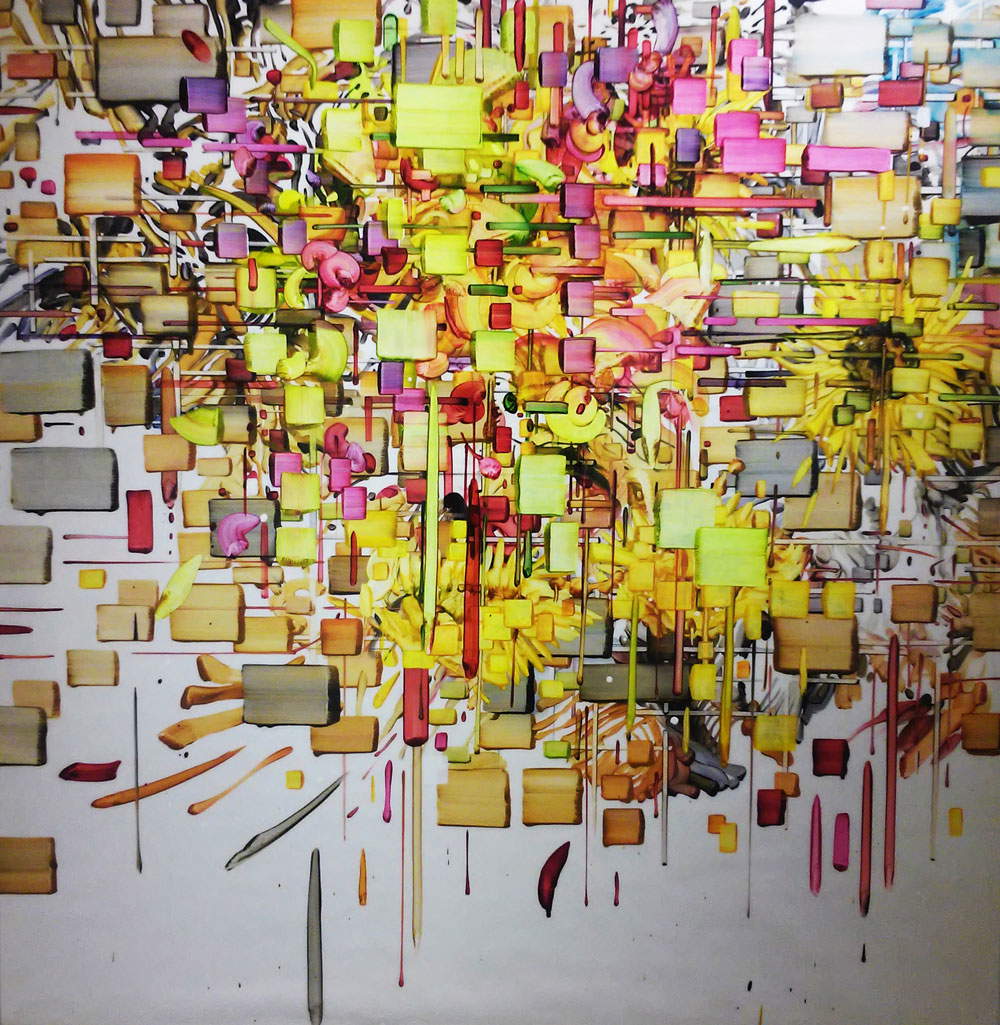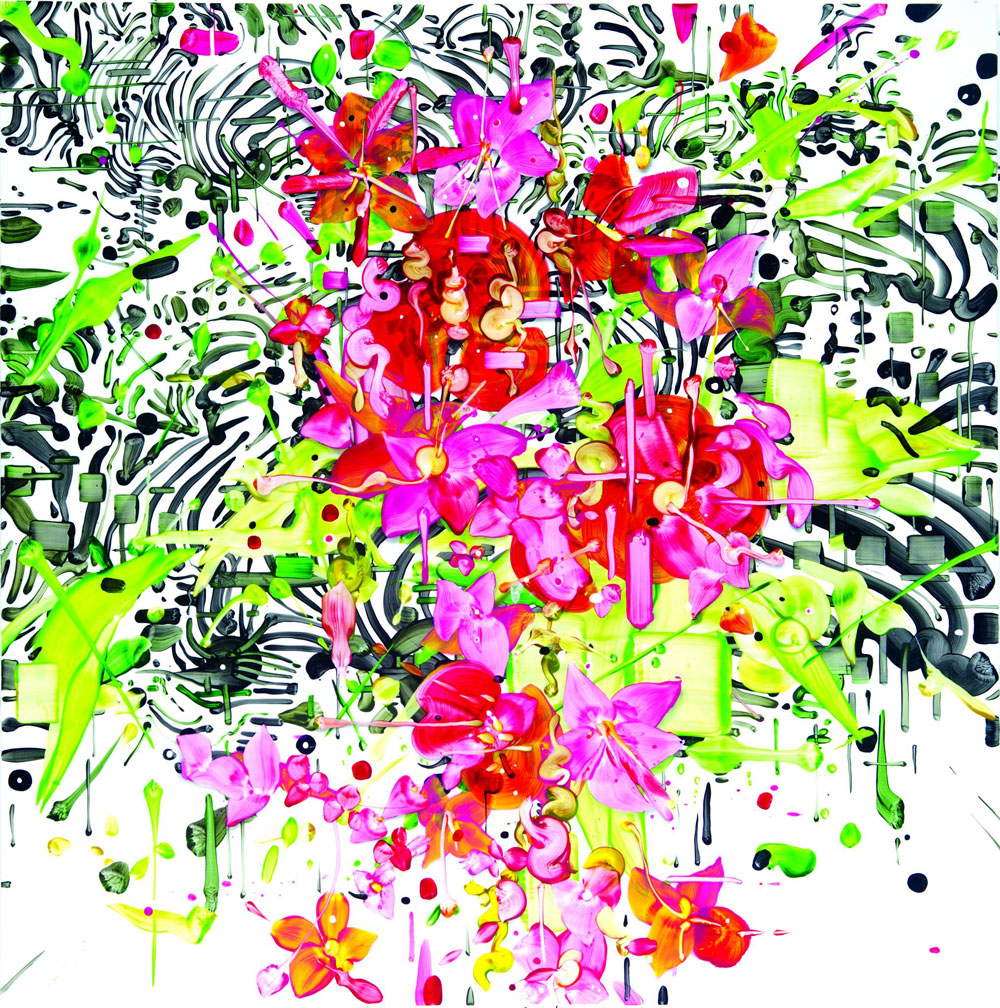"Decoding, that is the key word in my work in painting today. These paintings, over the years, have gone through different techniques and subjects, from still life to landscape to large hyperrealistic portraits. Today I dissect, decompose, transfigure the images I used to paint before, when I tried to make them as true as possible, almost tangible. That kind of painting, so perfect, achieved in such manic ways, now explodes and is torn apart in thousands of brush strokes." So declared Giuseppe Linardi (Buenos Aires, 1971) two years ago, when he took part in the fifty-sixth edition of the Venice Biennale: at that time his artistic research had already undergone that evolution that fromhyperrealism, which had marked the early stages of his career, would lead to the personal poetics of decoding.
Certainly a rather peculiar case, given the solid loyalty that usually binds the hyperrealists to their art, but not unique, and the mind cannot but run to the lofty example of a Gerhard Richter, an artist who perhaps more than any other was and is capable of moving with extreme ease, mastery and consistency from one register to another. Such a path, moreover, cannot be accomplished without being founded on a firm, strong coherence. This also applies to the research of Giuseppe Linardi, who never abandons his own artistic substratum: if anything, he transfigures it, to borrow the same verb he so icastically uses. His strong interest in nature persists even in those that, to an observer who sees his works for the first time, appear to be daring and disconnected from reality: but in order to reach such a boldness, it was necessary to have a deep vision, typical of an artist who is not only capable of his own means and fully master of his technique, but is also philosophically convinced of the spontaneity of his path. We see today the latest outcomes of his research in an exhibition curated by Nicola Ricci (with the clear title Deconstructions of Images) held in Carrara, at Palazzo Binelli, until May 26, 2017: works executed in the last few months are on display exclusively.
 |
| Giuseppe Linardi’s exhibition in Carrara |
 |
| Giuseppe Linardi, Decoding (2017) |
 |
| Giuseppe Linardi, Decoding (2017) |
“My new artistic research stems from many years of experimenting, looking for subjects, deconstructing and constructing images.” One of his solo shows held a few years ago in Milan quoted the title of a piece composed in the 1980s by an English experimental pianist, Laurence Crane, and imagined a Derrida who, caught in the small vicissitudes of daily life, went to the supermarket, himself becoming part of a system woven on transformations, symbols, uses, pollution: in short, of a reality in the making, subject to changes that often become destructive. But above all, it is a reality that constitutes the object of Linardi’s reflections, and of which, as much in the theory that animates his continuous experimentalism (which does not only involve painting: in the course of his career, Linardi has assayed the most varied modes of expression) as in the practice made up of colors and matter, one begins to become aware exclusively by taking a broad view. The foundations go back at least to postimpressionism and through the avant-garde to digital art, but they go in the opposite direction: Lissitzky said that the artist, with his brush, builds symbols. Linardi’s symbol, on the other hand, already exists, but it is broken down (or “deconstructed”) in ever new and surprising ways, giving rise to “codes” that are each time different (“code” is the term the artist uses to refer to the fragments that his shatterings generate), and that spur the viewer to linger in front of the painting, at close range, and then move away and again approach it in order to discover each time new views, new points of view, ensembles that reveal themselves a little at a time, possibilities left unexplored that suddenly show themselves in phantasmagorical swirls of fractured signs that separate, chase each other, reunite and divide again.
If we were to approach the painting almost to the point of touching it, we would certainly appreciate the rigor of Linardi’s brushstroke, laid out with speed and, at the same time, with precision, according to well-defined visual guidelines within which the decoding begins that leads the viewer back to the subject from which the artist started. Reality never evaporates completely but crumbles into myriads of colorful fragments: it is, the artist’s word, the chaos of our lives that is revealed before our eyes. In all its violent gaiety, one would add: because man perhaps does not realize the evil he can inflict on the world around him. Linardi would say that we are “cheerfully destroying it.” And the sharpness with which such visions are presented is symbolic of their topicality, of the character of urgency of Linardi’s reflections: it almost seems as if we are seeing them on liquid crystal screens. In order to achieve this effect, the artist subjects his works to a severe process that involves the addition of several layers of acetate on the pictorial surface and culminates in a final resin coating that gives clarity and luster to the paintings by enhancing the clarity of the colors.
 |
| Giuseppe Linardi, Decoding (2017) |
 |
| Giuseppe Linardi, Decoding (2017) |
 |
| Giuseppe Linardi, Decoding (2017) |
Nature and the environment, the favorite subjects of Giuseppe Linardi’s paintings, are always the starting point (but also the point of arrival). Thus, his compositions abound with sunflowers, ants, but also zebras and tropical flowers: the colorful exotic component, which has fascinated Linardi since his hyperrealist past, is probably a sign of theuniversality of the message that his works subtend. The “codes” sometimes take on the appearance of cubiform pixels, at other times those of drops that slip from the surface of the painting and seem almost to overflow to suggest to the viewer that the composition is not exhausted within the physical limits imposed by the support (Linardi denotes, moreover, a keen sense of space and depth, which even in the most abstract works underscores certain of the artist’s debts to the strictest tradition), often those of splinters that cut the painting diagonally and suggest a strong sense of movement that captures the viewer deep into the work.
Chaos, however, does not close off any eventuality. Fragments can also become primordial matter endowed with great generative force: there are also glimpses of wide spaces of positivity in Giuseppe Linardi’s works. Anxieties are not hidden, of course: but any sign of oppression is missing in the decodifications. Giuseppe Linardi’s is art burdened by all the disturbances that the present in which we live necessarily brings with it: nevertheless, it never loses its refined lightness. And perhaps this is also why his works exert such an intense fascination on those who observe them.
Warning: the translation into English of the original Italian article was created using automatic tools. We undertake to review all articles, but we do not guarantee the total absence of inaccuracies in the translation due to the program. You can find the original by clicking on the ITA button. If you find any mistake,please contact us.